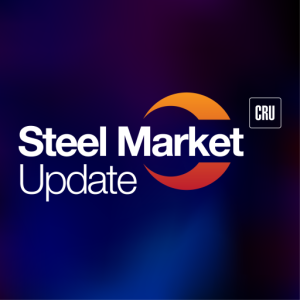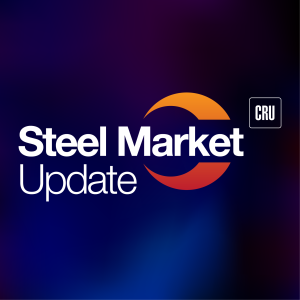
SMU price ranges: Sheet market rising ahead of holidays
Following last week’s pause, SMU’s price indices were overall steady to higher this week, holding at or near multi-month highs.

Following last week’s pause, SMU’s price indices were overall steady to higher this week, holding at or near multi-month highs.

SMU’s sheet and plate prices took a breather this week, holding relatively steady at multi-month highs.

All of SMU’s sheet price indices rose this week, climbing to new multi-month highs. At the same time, our plate index held steady.

All five of SMU’s sheet and plate price indices increased this week for the second week in a row, with all products inching up to new multi-month highs. Prices are now up by $30-70/st compared to those seen four weeks ago.

SMU’s price indices increased across the board this week, reaching new multi-month highs.

SMU's sheet and plate steel prices moved higher in unison this week.

Steel prices remained largely unchanged this week, staying at or near lows last seen in February. All five sheet and plate products tracked by SMU moved by no more than $5 per short ton (st) from the previous week.

Sheet and plate prices were flat or lower again this week on continued concerns about demand and higher production rates among US mills.

All five of SMU's steel sheet and plate price indices declined this week, falling to lows last seen in February.

Sheet prices slipped again this week amid discounting from certain mills and ongoing concerns about demand.

Steel prices continued to decline this week across all of the sheet and plate products tracked by SMU, pressured by short lead times and the typical summer slowdown.

US sheet and plate prices were flat or lower as reduced import volumes were offset by so-so demand.

Sheet and plate prices slipped this week on so-so demand, sideways scrap prices, and chatter that certain mills were making unsolicited calls looking for tons.

Prices for steel sheet slipped this week despite Section 232 tariffs remaining at 50% and a US strike on nuclear facilities in Iran over the weekend.

Steel prices inched higher again this week across most of the sheet and plate products tracked by SMU.

Steel prices climbed for a second straight week across all five sheet and plate products tracked by SMU.

Following eight consecutive weeks of declines, sheet and plate prices saw some upward movement this week in the wake of last Friday’s Section 232 tariff increase announcement. Gains varied by product.

Sheet and plate prices marginally declined again this week for the second consecutive week, pausing the strong downward trend seen from April through early May.

Most sheet and plate prices edged lower again this week, albeit at a slower pace compared to the movements seen over the last seven weeks. Buyers remain cautious and hesitant to hold onto much inventory, citing lingering demand concerns, ongoing tariff uncertainty, and a potentially weakening scrap market in June.

All of SMU’s sheet and plate steel price indices declined this week, easing by $30-40 per short ton (st) on average since early May. Prices continue to slide lower as buyers remain on the sidelines, wary of holding much excess inventory and expecting further declines.

Steel buyers said Nucor’s price decrease was a public acknowledgement of what most of the market had already known - that sheet prices were moving lower in a more significant way. The question now is whether mills and service centers will manage the decline or whether prices might fall rapidly, they said.

Most sheet and plate steel prices declined yet again this week, with four of SMU’s five indices moving lower.

Steel prices slipped again this week, with all five of SMU’s sheet and plate indices trending lower for the second week in a row.

This week is the first time all of our indices have moved lower in unison since July 2024.

Sheet and plate prices were mixed on Tuesday as the market took a wait-and-see approach to the Trump administration’s “Liberation Day” tariffs.

SMU's steel price indices moved in differing directions this week but remained largely stable as cautious buyers await clarity on pending steel tariffs and trade cases.

Steel prices were stable to higher this week for the second consecutive week across the sheet and plate products tracked by SMU. Three of our price indices increased from the previous week, while two held firm.

After over a month of increases, steel prices paused this week for some of the products tracked by SMU. Three of our price indices continued to climb, while two held steady from the prior week.

Market participants might disagree over how high flat-rolled steel price might go and for how long they might remain elevated. But there is near total agreement on one thing: Prices are up sharply again this week. The gains come on the heels of waves of mill price increases (for sheet and for plate), expectations that scrap prices will rise again in March, and the threat of tariffs looming over the market.

Each of the steel product prices tracked by SMU saw significant increases this week. All four of our sheet price indices rose by $30-50 per short ton (st) on average. Plate prices popped $60/st compared to the week prior.